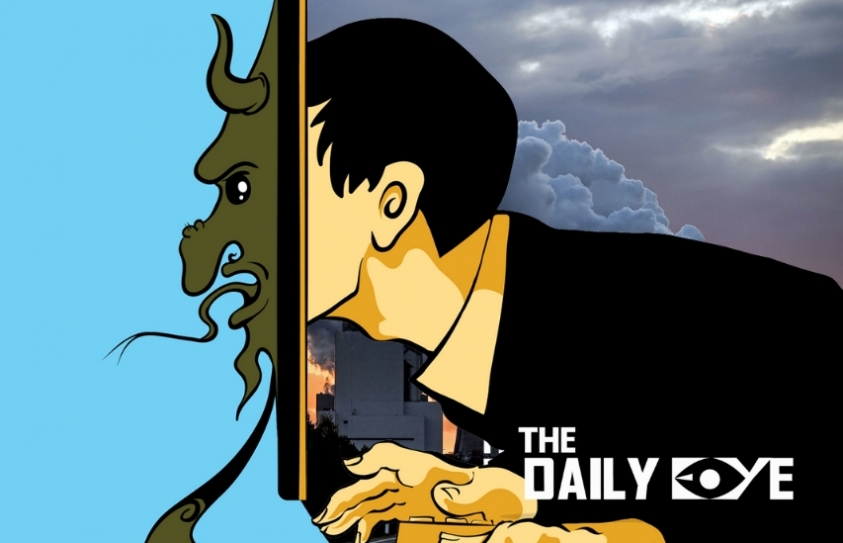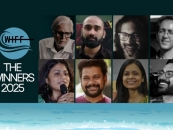
Living in the Troll Age
by Amit Khanna October 3 2018, 10:37 pm Estimated Reading Time: 11 mins, 29 secsFifty years ago, the internet was used as a medium to communicate between two individuals. Over time, it became a tool to connect one to many. About 15 years ago, web 2.0 was launched (we are now in web 3.0 or semantic web and 4.0). In a couple of years, we will step into its 5th iteration or emotional web 3.0-enabled social media, which is a connotative term for using internet to inform, entertain, communicate and engage through collaborative platforms.
Over three billion people across the globe are now part of social media. It's part of being a virtual citizen of the world. The very idea of the internet was founded on the principles of participative collaboration, which has since evolved into an always-on society. While sociologists and geeks may differ on the interpretation of the impact of the worldwide web, it’s universally accepted that information and entertainment are more democratic today than ever before. In the 90s and the first decade of the millennium, the digital divide between the haves and have-nots was enormous and seemed that it would take another generation to bridge it. However, today, in less than a decade, this divide has virtually narrowed to a small gap. No doubt our life has altered dramatically, but are we, as humans, equipped to handle change?
While India joined the digital party almost two decades after developed countries, it has caught up well. In the last few years, it has emerged as among the top five countries in using connected devices and web-based services.
In fact, even in newer technologies like digital payments and m-commerce, India is a leader. While we reap the digital dividend, a noticeable trend is the emergence of social media as an interlocutor of all discourse in contemporary India. News and information, often rumours and opinions, sometimes altered by digital manipulation, are passed on from one to one (unicast), one to many (broadcast) and many to many (multicast) through different applications using the internet increasingly by Over the Top (OTT) platforms bypassing conventional telecom networks.
So in India (and in most other countries) news gathering and dissemination is done through means such as WhatsApp, Facebook, YouTube, Twitter, Instagram, Snapchat, Tinder and Hike among other messaging services. In India alone, almost 35 per cent people are interconnected with others via these apps or sites and the number is growing by the minute. Next-generation access technologies, platforms and devices will further accentuate this interconnectivity among people.

Discovering long lost friends or keeping in touch with family and co-workers, any community of two or more are in a perpetual conversation. Smart offices, smart homes and smart cities are developing here and now. Information and news is shared or discovered in seconds through the internet. This, though, has raised the hackles of many socio-economic and political arbiters. So much so that we forget the basic construct of the worldwide web, that it involves voluntary access and we can actually block intruders of our digital space quite easily. If it’s easy to access knowledge, information and entertainment, it is equally convenient for unsubstantiated or partisan views or unwelcome content to be spread around the world instantly. No wonder in the next five years the global digital economy (including India) will be the only option for us.
Media and entertainment too are undergoing a cataclysmic change with existing business models falling off the cliff. The unprecedented and democratic ability of ordinary people to put forth their perspective, opinion, and creativity is a double-edged sword. While social media has and continues to be used positively to inform, educate, heal, work, entertain or even save people (in distress) it is now being abused to spread falsehood and/or ideological interpretation of news and information.
The Internet, while empowering the citizenry, has enabled a whole new way to publish, share and consume information and news or artistic work with very little regulation or editorial standards. This is the boon and the bane of an interconnected universe. Thus there is so much noise and heat but less light and substance on various social feeds on which billions spend much time and energy.
Unfortunately, in the present digital anarchy, everyone accuses the other of spreading lies and hatred but in actuality does the same oneself. No one (except a handful) comes out with objective and non-partisan intervention on social media. In this world of ones and zeros, we are using a binary to communicate every which way, and no individual is above guilt. The sad part is the alacrity with which majority of the other media including mainstream picks up this “fake news “ and tries to give it currency.
One of the problems is lazy journalism, especially broadcast and online, where anything provocative is immediately picked up and, without any attempt to ascertain its authenticity, is highlighted. Once it is on social media, thousands (never millions, just check any retweet or likes or shares or whatever) start flying via the internet across various divides — social, economic, geographical and political.
More often than not these days, most political, institutional or governmental response to any situation or statement is a response to a tweet, message or a post. Many leaders also use social media to reach out. After studying various data and information available in the public domain and talking to experts, I have deduced (not empirically as yet) that trading barbs and abusing and misinformation is done by less than five per cent of the total social media users. Most are passive followers or use these services infrequently. In India, at best, the number of people who regularly trade barbs, extoll, criticise or even troll is limited to a couple of million across platforms if not far less. The influencers and opinion makers are a self-perpetuating myth and more of a branding tool. Thus, social media so far has not translated into sale of products or services or votes, irrespective of massive data gathered or used by major platforms. Data analytics surely gives us a far more accurate assessment of where and how the users behave. A pattern of behaviour is a helpful insight and nowadays, the ability to track data is not limited to one group or company. In fact, individual hackers (like individual criminals or frauds) are an infinitesimally minute number.
Fake news
What is fake news but stories or hoaxes, often reworked digitally, to deliberately misinform or manipulate online individuals and communities. Usually, these stories are created to either influence people’s views, push a political agenda or cause confusion, and can often be a profitable business for online publishers. ‘Clickbait’ stories use sensationalist headlines to grab attention. Many bloggers, social-media junkies, attention seekers, propagandists or journalists or even bored common folk are happy participants in this virtual slugfest.
_.jpg)
Abuse has existed on the streets for centuries but society discovers a way to tackle it time and time again. One cannot use one’s politics to defeat technology and change. We cannot have freedom in parts. If we have the right to express ourselves, the other guy has an equal right to speak his mind however offensive we may find it.
No one is a forced participant in the online space. If a tweet can start a revolution it can also incinerate society. It’s for us to balance the two. Neither data theft nor misuse can or should be controlled and privacy protected but there can be no omnibus law. My digital identity and wealth needs protection and I do need some statutory repository of this which helps me in identifying myself virtually. Privacy should not isolate me virtually. That’s one of the reasons I support Aadhaar. Privacy in the digital world needs protection not in the archaic manner. Once I use a service or device in the connected world, my footprints are floating somewhere in digital clouds.
There has been so much global debate on ‘fake news” that even genuine news and information is often dismissed as fake. In a recent article, Irish journalist Hugh Linehan observed: “Media is no longer passively consumed – it’s created, shared, liked, commented on, attacked and defended in all sorts of different ways by hundreds of millions of people. Now with AI (Artificial Intelligence) creating a fake identity and literally manufacturing news and information, such interventions will only increase. Tech companies, large and small, are using algorithms not only to capture data (which in spite of all claims is a given in the digital universe) but also customise this information or content.
As automation and AI becomes mainstream, data manipulation or eaves-dropping cannot be wished away. The fact is digital footprints are virtually indelible. It’s an always-on, on-demand world. In this virtual reality to discern true or false information, propaganda/advertising or content will ultimately be left to individuals and society to evolve a natural filter to detect such news or information. Humans are a resilient species, which adapts to its environment. There are concurrent streams at play—society, technology, business, creativity, individual rights and regulation. Unless all move in synchronicity, we will continue to face problems.

The current obsession with privacy and social media is overdone. It’s a malaise which technology alone can sort out to a large extent. My sense is that in a couple of years, media ennui and user fatigue will set in and drive people from this unruly web. We have seen even in the earliest accounts of recorded history how people under the garb of anonymity or assumed identity or in distant and remote areas twisted the tale to suit their purpose. Professor Mark Griffiths, a psychologist at Nottingham Trent University, says people lower their emotional guard and behave in ways they would never do face-to-face when they are not immediately recognizable. They feel they can say anything they like to somebody. As someone so aptly put it “most people refrain from picking their nose in public, but dig with abandon when alone.” Hecklers of yore are today’s trolls. We will, in due course, learn to deal with this pest. Love and hate are primordial emotions. They will always remain though and their form will change. The trade-off is simple, more people gain with internet including social media than those who lose.
In a study in 1917, Australian researchers studied trolling and found that trolls display low levels of “affective” or “emotional” empathy. There is almost a vicarious delight, which we get by commenting or responding to contrarian viewpoint, or in reading a response from an opponent even when it is pre-known. That some people are aggressive and use abusive language or threats is more of a social problem than a regulatory issue. Governments around the world live in the false hope of regulating the internet in the same manner they have regulated analogue media. Sure there needs to be laws which have inbuilt safeguards to (which incidentally many websites/carriers/platforms are beginning to take pre or post action) self-regulate.
No one runs a business on invading a customer’s privacy beyond a point or disseminating lies. There are several ongoing judicial battles not only in India (Aadhaar for example) but also in the United States and China. Whether it is data heist or theft, they must be dealt with like any theft. I am not unduly alarmed because I do believe people, businesses, technology, society and nations ultimately use their own discretion and reform in time. Meanwhile, we need a forward looking regulatory eco system which sets the agenda for the next decade and not close the gate after the horses have bolted.
Narratives are built over decades, if not centuries, but they do change with time. You cannot have exclusivity on any narrative just because it has existed thus far. There is a global shift of both political and economic axes causing a lot of intellectual upheaval. Existing structures are bound to be dismantled. However, in a democratic system (and Internet is fundamentally democratic), the majority will have a dominant voice but not the only one for sure.

At every stage of our evolution, fear and caution has preceded societal gain, yet the world is a better place to live in today than it ever was. Whether it is social interaction or communication as a whole, we have seen the world transform in the last decade. A mobile phone has exponentially changed the lives of the most underprivileged sections of society.
Personally, I do believe a national identity project like Aadhaar is hugely transformational and empowering. Not that it is perfect and needs no further refinement. But as the no-privacy debate is battled in courts, parliament and other multilateral forums, it is a matter of time (not long though) before the benefits far exceeded the problems. Whether we like it or not, we are now entering a transactional economy where some personal identity will be the fundamental building block of our lives. From health to education, from governance to development, creativity will evolve to adapt to this new age.
Let us not forget that 20 per cent of the planet’s population (those born after 1995) is post millennials. They are the first digital natives, who are as alien to the analogue world as we were to a time without printing press, steam engine or electricity. It’s this growing population that would begin laying down new social norms. We, the previous generation, can at best be interlocutors of the future not interlopers. After all, it’s our digital life too.
(As first published in Financial Chronicle - http://mydigitalfc.com/fc-weekend/point-view-living-troll-age)




-173X130.jpg)
-173X130.jpg)
-173X130.jpg)
-173X130.jpg)
-173X130.jpg)

-173X130.jpg)
